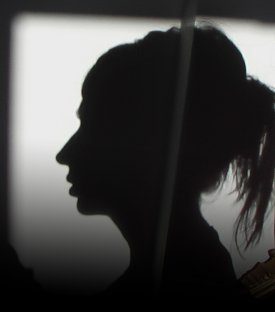Not choose not to be
I'm part of that group of people who tasted the bitter flavour of the dictatorship only for the early but fundamental fifteen years of their life, the most important period for formation of identity. Since I was a child, going for a walk with my parents through the streets of Tirana, I loved to observe the people, I was curious to understand what kind of world I belonged to.
I had the habit of often looking down, as close as possible to the ground.
Watching the movements of all those legs . . . all those feet.
In particular I used to watch the shoes and try to guess to which kind of personality they could be linked. But this was not so easy. Along the Boulevard of Tirana everybody looked the same.
In fact in that time Albanian people were not able to identify themselves in their clothing, nor be identified through it. The party forbid any influence from the "western" countries and the commerce, exclusively fed by the communist ideology, was offering, to the not particularly demanding costumers, only two model of shoes and sandals, for either men or women.
And the choice was furthermore fixed by the limited financial possibilities of the overwhelming majority. In Albania to create an individuality of one's own was a forbidden luxury.
Often at night, anonymous shoes of anonymous and tired parents came back home with their burden of anguish rather than love. Often at night, "incomplete human beings", after putting down their shoes, would unload the sense of guilt accumulated from childhood, tiredness and frustration onto innocent children. Until the annihilation of personality. Until they'd think: "I don't exist anymore"!
As Gerard Manley Hopkins said in his poetry "Carrion Comfort":
cry I can no more, I can, can something, hope, wish day come, not choose not to be. Enrico Martinelli article pdf
|
Not choose not to be
Faccio parte di quella schiera di persone che ha assaggiato il sapore amaro della dittatura soltanto per i primi ma fondamentali quindici anni di vita, il periodo più importante nella formazione dell'identità propria e individuale. Fin da piccola, passeggiando coi miei genitori per le strade di Tirana, amavo osservare la gente, ero curiosa di capire a quale mondo appartenessi. Avevo l'abitudine di guardare spesso giù, più vicino possibile a terra. Osservavo i movimenti di tutte quelle gambe…di tutti quei piedi…Osservavo in particolare le scarpe e cercavo di indovinare a quale tipo di personalità si potessero associare. Ma la cosa non era così semplice. Lungo i Boulevard di Tirana sembravano tutti uguali.Infatti a quel tempo la popolazione albanese non riusciva ad identificarsi nell'abbigliamento né ad essere identificata in base ad esso. Il partito vietava ogni influenza di derivazione "occidentale" e il commercio nutrito esclusivamente dell'ideologia comunista offriva a clienti non particolarmente esigenti solo due modelli di scarpe e sandali, sia per gli uomini che per le donne. E la scelta era ulteriormente vincolata dalle limitate possibilità economiche della stragrande maggioranza. In Albania crearsi una propria individualità era un lusso non consentito.Spesso la sera, scarpe anonime di anonimi e stanchi genitori rientravano a casa con il loro carico d'angoscia piuttosto che d'amore. Spesso alla sera, "esseri incompiuti", dopo aver posato le loro scarpe, scaricavano sensi di colpa accumulati dall'infanzia, stanchezza e frustrazione su bambini innocenti. Fino ad annientarne la personalità. Fino a far loro pensare: "io non ESISTO"!Come dice un verso di "Carrion Comfort" di Gerard Manley Hopkins:cry I can no more, I can, can something, hope, wish day come, not choose not to be. |

